
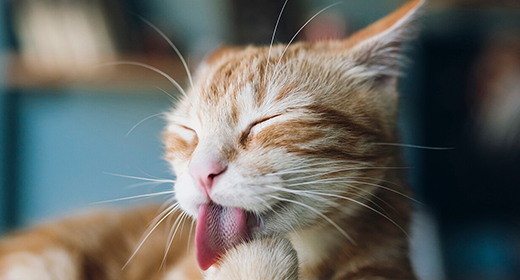
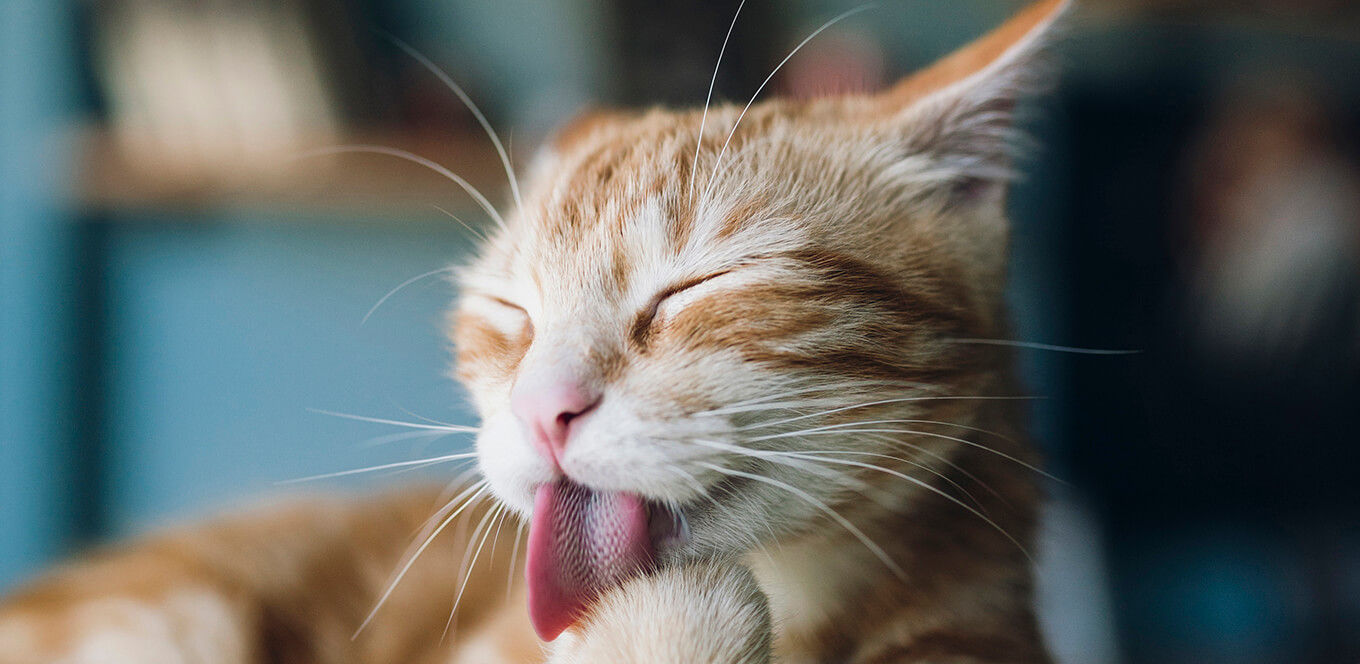
Every cat owner recognizes the warning signs of an upset feline stomach: the mournful meow, gagging and the heaving retch. But just as suddenly as it began, your cat returns to good health while you’re left scrubbing the carpet.
The scenario is a familiar one for Cynthia Bowen of Cleveland, Ohio. As the owner of four Maine Coons, Bowen has cleaned her share of messes. “It would happen every couple of months or so,' she says. 'Otherwise, they were perfectly healthy.'
Although it's not a pleasant subject, vomiting is something cats seem to do on cue. Many cat owners accept this as a natural part of owning a pet, but it doesn’t have to be that way. Knowing what triggers an upset stomach and what you can do about it will make for a better relationship with your cat.
Many owners attribute their cat’s vomiting to hairballs, but that’s not the only culprit. “It’s careless to assume that most cases of vomiting in cats are due to hairballs,” says Dr. William Folger, a DVM from Houston. Two other frequent causes of an upset stomach are eating too fast and curiosity.
Cats sometimes eat too much too fast. When the stomach wall expands too quickly, a signal is sent to the brain to cause regurgitation. In these cases, the mess on your floor is from regurgitation, not actual vomiting. When a cat regurgitates, she brings up fluid and food from her esophagus by opening her mouth — unlike vomiting, which involves gagging and retching.
Regurgitated food is still formed and may smell fermented. “Cats that eat too quickly because they are gluttonous or stressed by food-bowl competition can regurgitate right after eating,” says Dr. Sara Stephens, a DVM from Montana. But don’t assume regurgitation is always a case of eating too quickly. It could be caused by esophageal problems, obstruction of the digestive tract, hairballs or dehydration. If you’ve forced your cat to eat slowly and she still has problems, contact a veterinarian.
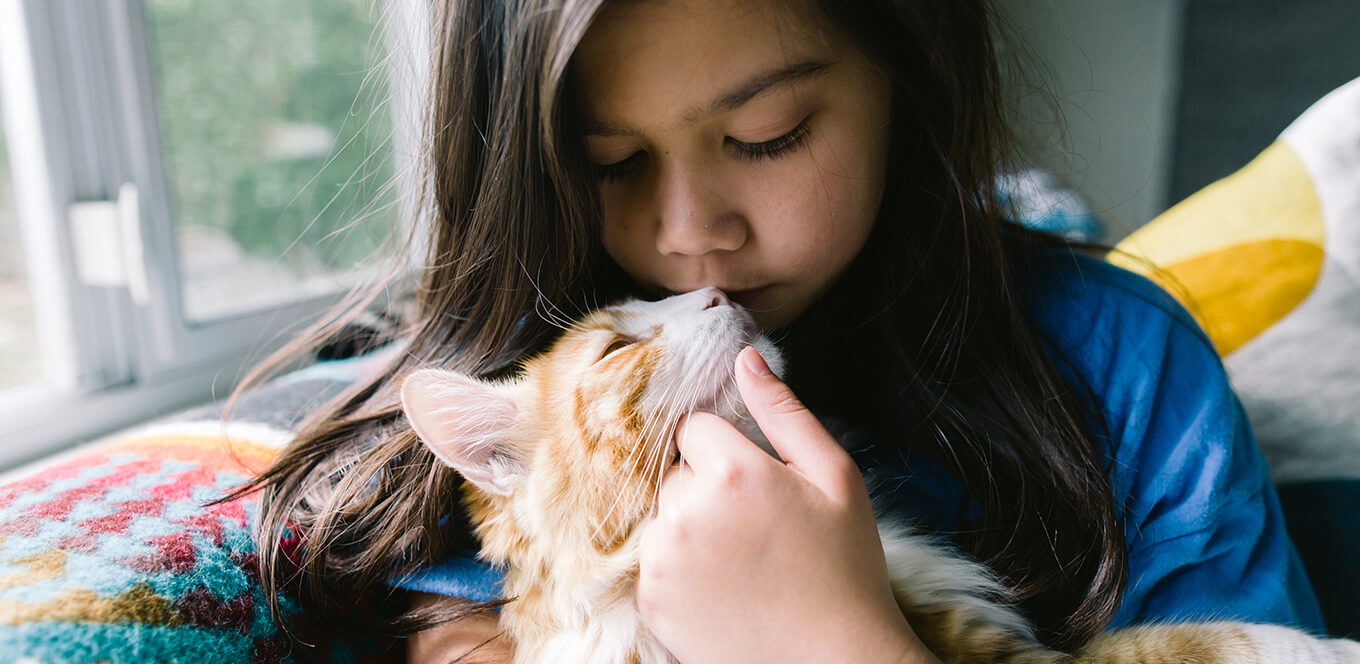
Grass, carpet and toilet paper are just a few things cats may digest and later vomit. The vomiting is a protective mechanism — nature’s way of cleansing your cat’s system. Sometimes, though, curiosity can lead to more serious problems. String, toy parts and feathers are favorites of playful felines and can lodge in the stomach or intestine, causing repeated vomiting and severe distress. If your cat exhibits these symptoms, take her to a veterinarian immediately. Surgery is often necessary to remove the object.
Repeated cat vomiting should never be ignored because it can lead to dehydration. But because vomiting is common in cats, how do you know what’s normal? “A general guideline is that if the cat is vomiting one to three times a month, we consider this normal,” says Dr. Folger.
He considers it serious if the vomiting occurs twice daily for two or three days. If your cat stops eating, seems to have stomach pain or retches continuously, or if the vomit is mixed with blood, take her to a veterinarian. And as always, if you’re suspicious that a lingering problem could be harmful to your pet, call your veterinarian. A visit to the office can help relieve your cat’s discomfort and your worries as well.
Often, owners accept their pet’s vomiting as a natural part of their behavior, but just because cats seem to have more than their fair share of stomach issues doesn’t mean you don’t have options.
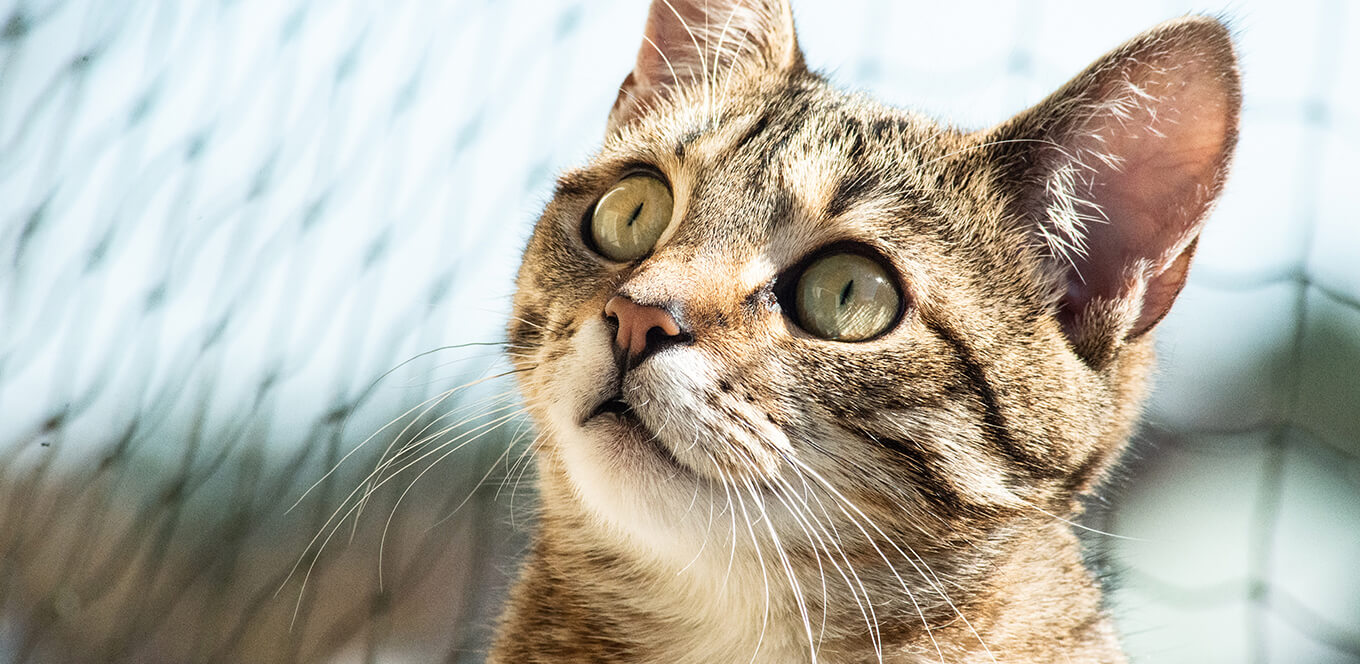
One simple preventative measure is to get your fast-eating cat to slow down or to simply eat less. Dr. Stephens recommends feeding smaller portions, elevating your cat’s food dish slightly or putting an object, such as a ball, into the dish. The cat will be forced to eat around the ball, thus slowing her intake. If you do this, make sure the ball isn’t small enough to swallow. And you may need to feed cats in a multiple-cat household at different times and places to reduce competitive eating.
If simple solutions don’t work, watch your cat’s eating behavior and reactions. Bowen, for example, tried changing her cats’ diets. “Since switching to IAMS™, they rarely throw up,” Bowen says.
“Usually, when you change to a higher-quality diet, there is no problem,” Stephens says. Here are some tips for helping make sure your cat’s food transition is as successful and comfortable as possible:
If your cat vomits more than three times a month or has chronic stomach issues, you can take several steps to help resolve her discomfort. With your veterinarian’s help and a little effort on your part, your cat’s stomach issues can be a thing of the past.

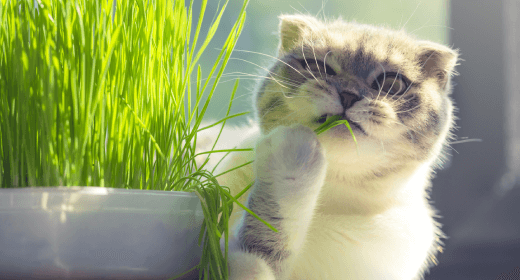
fibre is a vital component in a cat's diet, categorised as soluble and insoluble. Soluble fibre, dissolving in water, regulates blood sugar and lowers cholesterol, while insoluble fibre adds bulk, aiding in digestive movement. Crucially, fibre remains undigested, with some types fermenting to produce short-chain fatty acids (SCFA). These SCFAs serve as a key energy source for the cells lining the intestinal tract, fostering a healthy gut environment. fibre for cats also promotes weight management by inducing a sense of fullness, preventing overeating.
Balancing fibre in cat food is crucial, as excess may lead to nutrient malabsorption. Monitoring fibre types and amounts is vital for optimal feline health, ensuring digestive regularity. Striking this balance supports longevity and vitality in cats, making fibre an indispensable element in their overall well-being.
Today, people are more aware of fibre and its role in their diet. Studies showing the beneficial effects of higher fibre levels in humans influence the way many people think about their own food and that of their pets. Some manufacturers now apply the recommendations of human nutritionists and make high-fibre diets for cats, but cats have a much shorter digestive tract than we do. And unlike humans, cats are carnivorous, so their nutritional needs are better satisfied with meat rather than plant matter. Therefore, cats have different dietary needs than humans. For more than 60 years, companion animal nutritionists at IAMS™ have been studying diets to meet the special nutritional needs of cats.
The feline microbiome constitutes a diverse community of microorganisms, residing predominantly in the gastrointestinal tract. This intricate system of bacteria, viruses, and fungi significantly impacts a cat's health. It plays a crucial role in digestion, influencing nutrient absorption, supporting immune function, and even affecting behavioural patterns. The delicate balance within the microbiome is essential for the overall well-being of the cat, making it a key focus in understanding and optimising feline health.
When it comes to feline nutrition and gut health, the impact of fibrous foods on a cat's microbiome is driven by processes essential for maintaining gastrointestinal balance. Listed below are some interactions and their impact on your cat:
When cats consume fibrous foods, their gut microbiome undergoes a dynamic response, adapting to the influx of indigestible fibres.
Certain fibres for cats function as prebiotics, fostering the growth and activity of beneficial bacteria, such as Bifidobacteria and Lactobacillus, which are essential for gut health.
fibre fermentation by gut bacteria results in the production of short-chain fatty acids (SCFAs), including acetate, propionate, and butyrate.
SCFAs play a pivotal role in nourishing the cells lining the intestinal tract, contributing to mucosal integrity, nutrient absorption, and overall gut function.
fibre-induced fermentation also produces gases and by-products, influencing the pH of the gut environment, creating an environment that discourages harmful pathogens.
IAMS Company research shows the optimal crude fibre level for healthy cat’s ranges from 1.4% to 3.5%. At these levels, nutrient breakdown is maximised. In unique situations, such as hairballs, higher fibre levels may be beneficial.
An important characteristic of fibre is its fermentability, or how well it can be broken down by bacteria in the intestine. This breakdown produces short-chain fatty acids, which provide energy to the intestines. fibre varies in fermentability. fibre sources used in pet foods include cellulose, which is poorly fermentable; beet pulp, which is moderately fermentable; and gums and pectin, which can be highly fermentable. Research has shown that moderate levels of moderately fermentable fibre, such as beet pulp, provide the benefits of energy for the intestinal lining and bulk, without the negative effects of excessive stool or gas and, therefore, are beneficial in cat diets.
Incorporating high-fibre cat food into your feline’s diet offers various health benefits, contributing to their overall well-being. Here is a breakdown of the advantages and how they positively impact feline health:
High-fibre cat food promotes optimal digestive regularity in cats by adding bulk to the stool. This helps prevent issues such as constipation and ensures smoother bowel movements, contributing to overall gastrointestinal health.
The inclusion of fibre in cat food provides a feeling of fullness without adding excessive calories. This can be beneficial for weight management, as it reduces the likelihood of overeating and helps control calorie intake, supporting healthy body weight.
Increased fibre intake aids in controlling and reducing hairballs in cats. The fibrous content helps bind hair together, facilitating its passage through the digestive tract and minimising the risk of hairball-related issues.
fibre-rich cat food diets play a crucial role in managing diabetes in cats. The slow digestion and absorption of carbohydrates associated with increased fibre can help regulate blood sugar levels, providing better glucose control for diabetic cats.
Soluble fibre for cats, found in high-fibre foods, has cholesterol-lowering properties. By binding to cholesterol molecules and promoting their excretion, soluble fibre contributes to maintaining healthy cholesterol levels, supporting cardiovascular well-being in cats.
High-fibre diets are often recommended for cats with specific medical conditions, such as obesity, diabetes, or certain gastrointestinal disorders. The advantages of fibre, including weight management and blood sugar regulation, make it a valuable component in the overall treatment and management of these conditions.
While low-fibre cat food is recommended in certain cases, it is essential for cat parents to be aware of potential drawbacks that can impact their feline companion's health and well-being.
A diet low in fibre may contribute to constipation issues in cats as it lacks the bulk necessary for proper bowel movement regulation. This can result in discomfort for the cat and potential complications if not addressed promptly.
Low-fibre foods might compromise the overall efficiency of the cat's digestive system, potentially leading to inadequate nutrient absorption. This could impact the cat's overall health and vitality, making it crucial to monitor its digestive well-being.
While low-fibre diets are often associated with weight loss, they may also pose a risk of obesity if not carefully monitored. Cats might consume more to compensate for the reduced caloric content, emphasising the need for vigilance in managing portion sizes.
Cats on a consistently low-fibre diet may face challenges in obtaining a balanced array of essential nutrients, potentially leading to nutritional imbalances and health issues.
Being aware of these potential downsides helps cat parents make informed decisions about their feline’s diet, promoting overall feline well-being.
When choosing a pet food, fibre is an important consideration, but remember that the needs of cats are not the same as those of humans. A moderate level of moderately fermentable fibre, such as beet pulp, provides proven nutritional benefits for cats. Cat diets containing high levels of poorly fermentable fibre dilute calories and deprive cats of the nutrients they need.
All IAMS products are made with levels of moderately fermentable fibre needed to promote intestinal health. And all IAMS foods, such as IAMS ProActive Health™ Adult Original with Chicken, contain the moderately fermentable fibre system, which is the exclusive property of IAMS Company and is protected by U.S. Patent No. 5,616,569 for Pet Food Products Containing Fermentable fibres and Process for Treating Gastrointestinal Disorders.
Ensuring your feline companion meets their daily fibre requirements is crucial for their overall well-being. IAMS cat food offers a balanced and convenient solution to help achieve this goal. Here's a guide on maintaining your cat's daily fibre quota using IAMS:
IAMS cat food provides detailed nutritional information on the label. Check for the fibre content to understand how it contributes to your cat's daily requirements.
IAMS offers a range of cat food varieties, including formulas designed for specific needs such as weight control, hairball management, and digestive health. Select a variety that aligns with your cat's individual needs.
If you're introducing a new IAMS formula to your cat, make the transition gradual to allow their digestive system to adjust. This helps prevent any sudden changes in fibre intake.
Every cat has unique dietary needs. Consult with your veterinarian to determine the optimal daily fibre quota for your cat based on factors such as age, weight, and health conditions.
IAMS provides feeding guidelines on the packaging. Monitor and adjust portion sizes based on your cat's activity level and weight management goals to ensure they receive an appropriate amount of fibre.
IAMS offers both wet and dry cat food options. Combining both varieties can offer a well-rounded diet, ensuring your cat receives a mix of moisture and essential nutrients.
Regular veterinary check-ups help monitor your cat's overall health, including their digestive well-being. Discuss any concerns about fibre intake or dietary preferences with your veterinarian during these visits.
By incorporating IAMS cat food into your cat's diet and following these guidelines, you can provide nutritionally balanced and fibre-rich cat food that supports their digestive health and overall vitality.